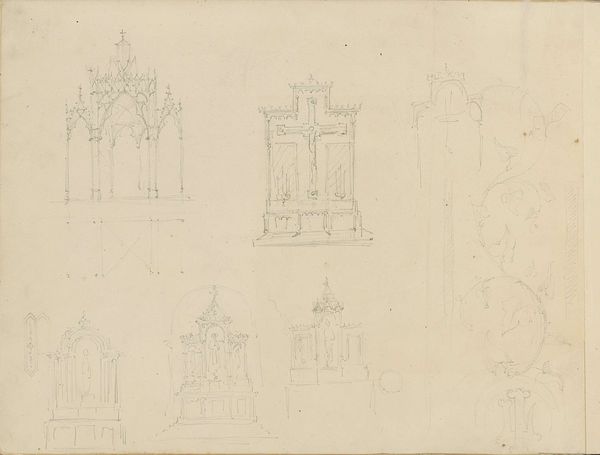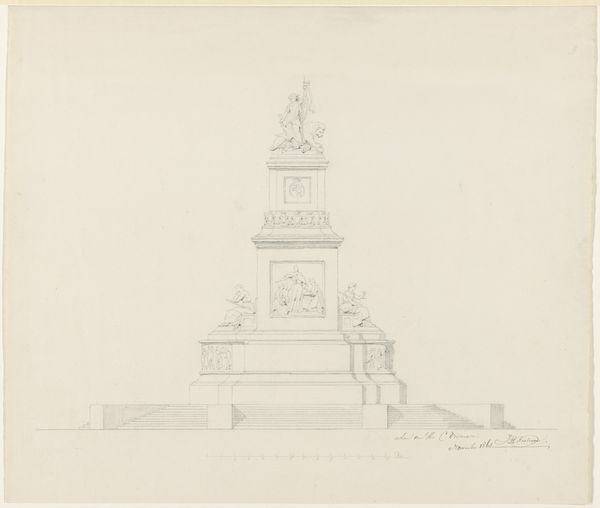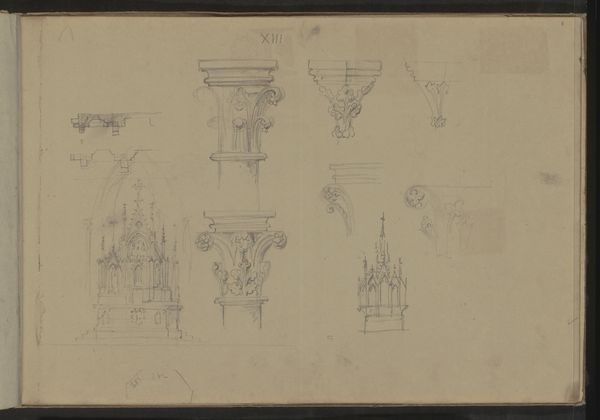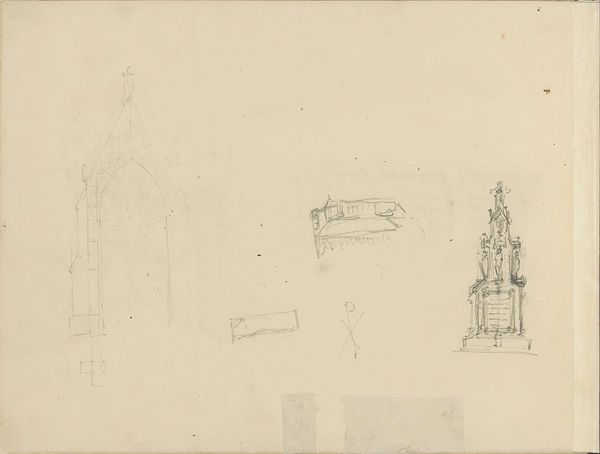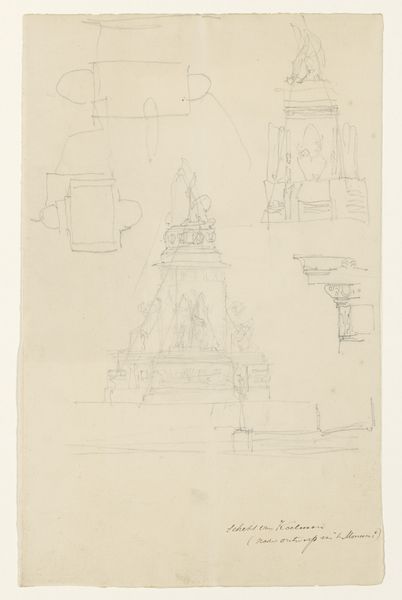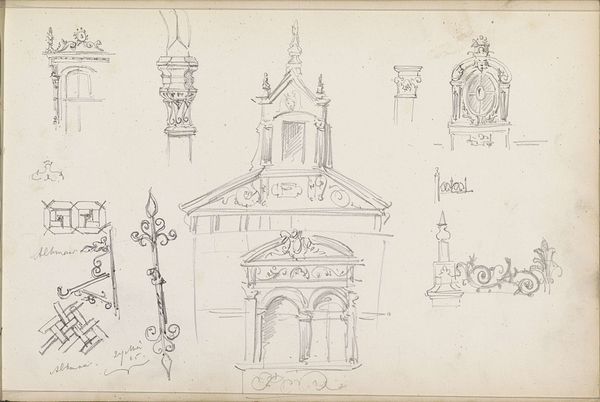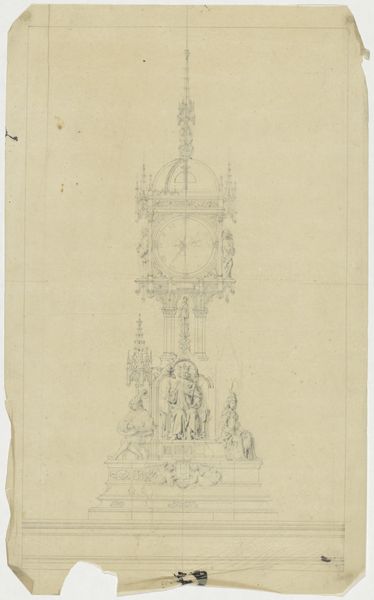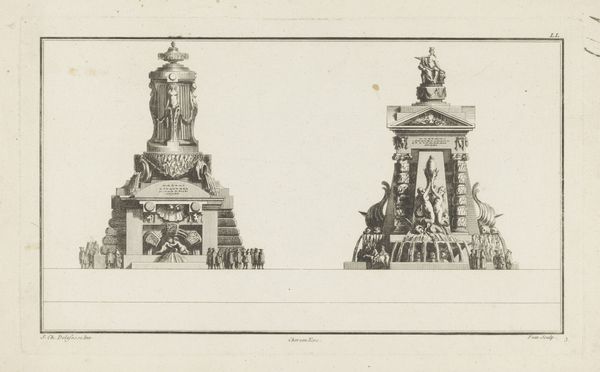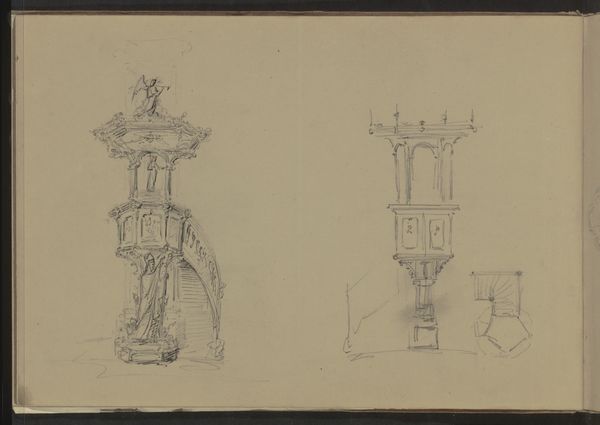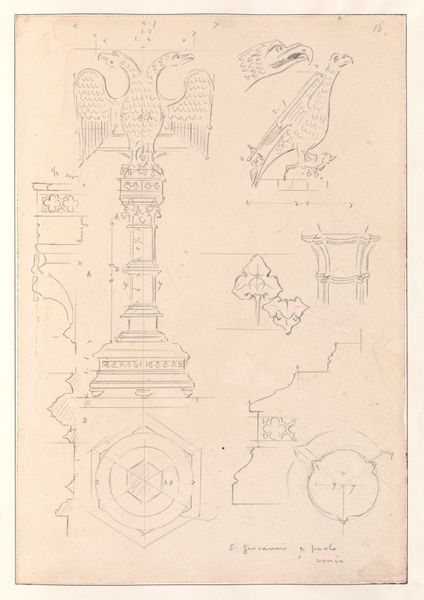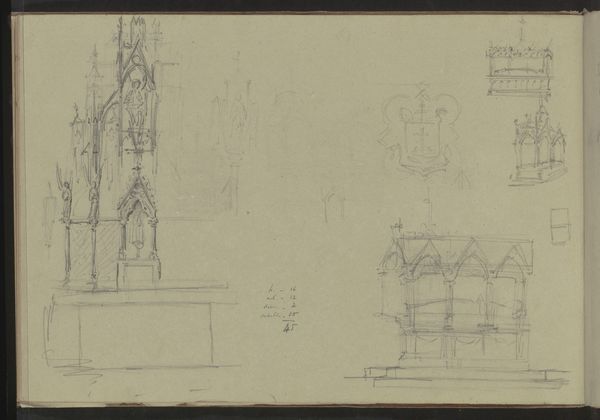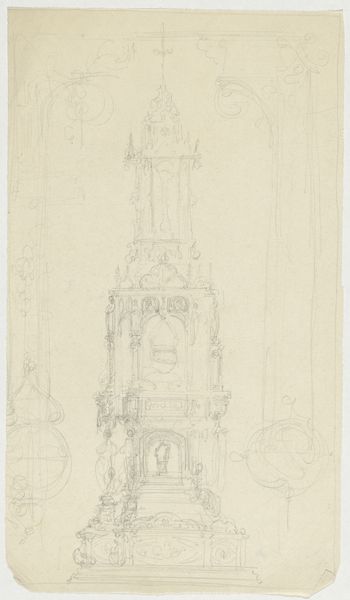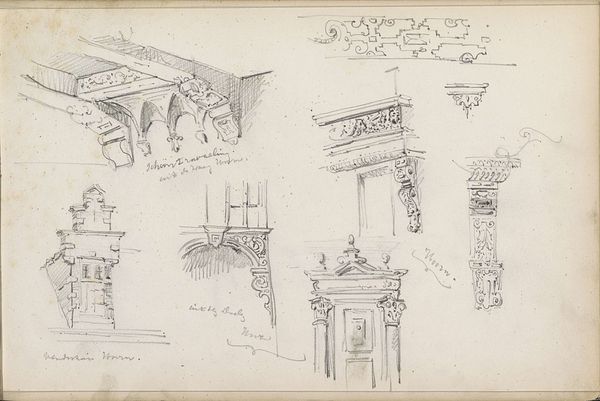
Schetsblad met ontwerpen voor het monument voor Bernhard, hertog van Saksen-Weimar, op het Huygensplein Den Haag 1828 - 1893
0:00
0:00
drawing, paper, pencil
#
drawing
#
neoclacissism
#
landscape
#
paper
#
sketch
#
pencil
#
cityscape
Dimensions: height 417 mm, width 276 mm
Copyright: Rijks Museum: Open Domain
Curator: Let's take a look at this intriguing sketch page by Johan Philip Koelman, titled "Schetsblad met ontwerpen voor het monument voor Bernhard, hertog van Saksen-Weimar, op het Huygensplein Den Haag," dating from between 1828 and 1893. Editor: My initial impression is one of unrealized grandeur. A series of monuments, each unique yet sharing this yearning for permanence, sketched with such delicate impermanence in pencil on paper. It’s like a ghostly chorus of architectural possibilities. Curator: Indeed. We see Koelman, working within the Neoclassical tradition, grappling with the very idea of commemoration and public memory. Think about the social and political forces driving the desire to monumentalize Duke Bernhard in The Hague. He played a prominent role in the Dutch army. How do we translate that complex legacy into stone and bronze? Editor: Exactly! And the sketches vary wildly! Some are these stern, vertical obelisks demanding respect, others are almost playful, incorporating sculptures and ornate details, softening the message, I imagine. It's fascinating to see him working through different visual arguments. One design is graced by what looks like a rather comfy looking lion. Curator: Note the recurring motifs of figures—both human and animal. How Koelman is envisioning civic virtue and leadership. Considering shifts in the concept of heroism during that time, and how the public would engage with the imagery, provides useful background when interpreting these monuments. Editor: And they all speak to the relationship between landscape and the monumental...each framed by imaginary cityscapes...it's as if he's imagining how the light would catch each design, the shadow it might cast. This almost ghostly preview offers a powerful insight into an artist's creative mind at work. Curator: Thinking about the social history here is essential, I agree. Who was this monument ultimately intended to serve? Whose narrative was it solidifying, and perhaps more subtly, whose was it obscuring? Editor: It certainly provides some profound points to ponder! Ultimately this glimpse into a collection of dreams, the many that could have been made physical for posterity is quite moving!
Comments
No comments
Be the first to comment and join the conversation on the ultimate creative platform.
